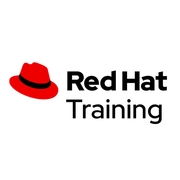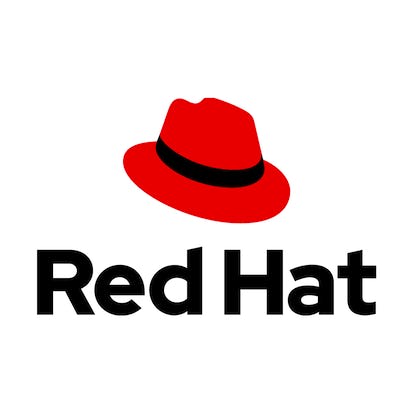- Level Foundation
- Duration 21 hours
- Course by Red Hat
-
Offered by

About
This course will provide you with a basic introduction to Linux skills using Red Hat Enterprise Linux 8. It will show you how a Linux system is organized, and will demonstrate introductory system administration tasks, which you will be able to practice on your own. You will be introduced to reasons why Linux and the open source development model are so important in today's computing environment. Linux systems are used everywhere"the internet, point-of-sale systems, and the world's stock markets. You'll find Linux running smart TVs, in-flight entertainment systems, and most of the top supercomputers in the world. There are many reasons why it is valuable for you to learn Linux. If you are looking for new opportunities in IT, Linux skills are in high demand. For example, if you are developing applications, it's likely your application or its runtime is hosted on Linux. If you're working in the cloud, your cloud instances may be based on Linux, and your private or public cloud environment is also probably based on Linux. If you're working with mobile applications or the Internet of Things, it is also likely that the operating system of your device is based on Linux. And, if you use Windows, you'll need to interoperate with Linux. After completing this course, you will have a solid introduction to working with Linux from the command line, using Red Hat Enterprise Linux 8 as a model. In applying these skills, you will be able to perform fundamental operational tasks, whether your Linux machine is on your desk or on a remote system across the Internet.Modules
Overview of Linux and Red Hat
1
Assignment
- Overview of Linux and Red Hat
2
Videos
- Course Introduction
- Overview of Linux and Red Hat
4
Readings
- Course Layout
- What is Linux?
- Who Is Red Hat?
- Red Hat Enterprise Linux Ecosystem
Installing and Accessing Red Hat Enterprise Linux
1
Assignment
- Installing and Accessing Red Hat Enterprise Linux
1
Videos
- Installing and Accessing Red Hat Enterprise Linux
1
Readings
- Obtaining Red Hat Enterprise Linux
Interfacing with Red Hat Enterprise Linux
1
Assignment
- Interfacing with Red Hat Enterprise Linux
1
Videos
- Interfacing with Red Hat Enterprise Linux
1
Readings
- Access the Command Line
Running Basic Commands
1
Assignment
- Running basic commands
1
Videos
- Running Basic Commands
1
Readings
- Basic Command Syntax
Working with Man Pages
1
Assignment
- Working with Man Pages
1
Videos
- Working with Man Pages
1
Readings
- Introduction to the Linux Manual Pages
Pipelines, Input, and Output Redirection
1
Assignment
- Pipelines, Input, and Output Redirection
1
Videos
- Pipelines, Input, and Output Redirection
3
Readings
- Standard Input, Standard Output, and Standard Error
- Redirect Output to a File
- Construct Pipelines
Basic Text Editing with Vim
1
Assignment
- Basic Text Editing with Vim
1
Videos
- Basic Text Editing with Vim
1
Readings
- Edit Files with Vim
Software Management on Red Hat Enterprise Linux
1
Assignment
- Software Management on Red Hat Enterprise Linux
1
Videos
- Software Management on Red Hat Enterprise Linux
1
Readings
- Software Packages and RPM
Linux File System Hierarchy
1
Assignment
- Linux File System Hierarchy
1
Videos
- Linux File System Hierarchy
1
Readings
- Linux File System Hierarchy Concepts
Working with Files and Directories
1
Assignment
- Working with Files and Directories
1
Videos
- Working with Files and Directories
1
Readings
- Working with Files and Directories
Basic File Management Commands
1
Assignment
- Basic File Management Commands
1
Videos
- Basic File Management Commands
1
Readings
- Manage Files with Command-line Tools
Process Management Basics
1
Assignment
- Process Management Basics
1
Videos
- Process Management Basics
1
Readings
- Process States and Lifecycle
Managing System Processes Using Systemd
1
Assignment
- Managing System Processes Using Systemd
1
Videos
- Managing System Processes Using Systemd
Managing IP Connectivity
1
Assignment
- Managing IP Connectivity
1
Videos
- Managing IP Connectivity
1
Readings
- Edit Network Configuration Files
Configuring the Firewall
1
Assignment
- Configuring The Firewall
1
Videos
- Configuring The Firewall
1
Readings
- Firewall Architecture Concepts
Users and Groups
1
Assignment
- Users and Groups
1
Videos
- Users and Groups
1
Readings
- User and Group Concepts
Running Commands As Other Users
1
Assignment
- Running Commands As Other Users
1
Videos
- Running Commands As Other Users
2
Readings
- Access the Remote Command Line with SSH
- The Superuser
SSH Key Management
1
Assignment
- SSH Key Management
1
Videos
- SSH Key Management
1
Readings
- Configure SSH Key-based Authentication
Copying Remote Files
1
Assignment
- Copying Remote Files
1
Videos
- Copying Remote Files
1
Readings
- Synchronize Remote Files and Directories
Monitoring System Performance
1
Assignment
- Monitoring System Performance
1
Videos
- Monitoring System Performance
1
Readings
- Monitor Process Activity
Basic Troubleshooting
1
Assignment
- Basic Troubleshooting
1
Videos
- Basic Troubleshooting
1
Readings
- Find Events on the System Journal
Using The Web Console
1
Assignment
- Using The Web Console
1
Videos
- Using The Web Console
1
Readings
- The Web Console Management Interface
Comprehensive Review
1
Assignment
- Comprehensive Review
1
Videos
- Course Conclusion
Auto Summary
Discover the essentials of Red Hat Enterprise Linux with this foundational course designed for IT and Computer Science enthusiasts. Guided by expert instructors on Coursera, you'll delve into system organization, basic administration tasks, and the significance of Linux in today's tech landscape. Over 1260 minutes of content, you'll gain practical skills applicable to various IT domains, including cloud computing and IoT. Flexible subscription options are available, including Starter, Professional, and Paid plans, catering to both beginners and professionals seeking to enhance their Linux proficiency.

Red Hat Training


